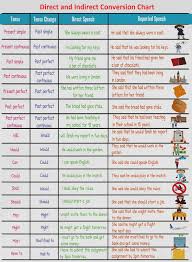You can download the Direct and Indirect Speech Rules Chart PDF for free by using the direct link provided below on the page.
Direct and Indirect Speech Rules Chart PDF
A direct speech report is a way of summarizing what someone has said using their exact words. To indicate direct speech, we often use quotation marks to enclose the spoken words. However, it’s also possible to convey someone’s statement indirectly without using their exact words. In these cases, we use indirect speech, which involves reporting the gist of what was said.
Typically, verbs like “said,” “told,” or “asked” precede the reported speech. Understanding the difference between direct and indirect speech can sometimes be challenging, especially for young children who are still learning language skills. Quoting someone’s words becomes necessary when we want to describe a specific event or action accurately. In this post, we will provide you with all the answers to your questions about direct and indirect speech, so you’ll have a clear understanding of both.
Direct and Indirect Speech Rules Chart
When it comes to using direct and indirect speech, there are certain rules that need to be followed. By practicing these rules, you can effectively change direct speech into indirect speech.
Before diving into the rules, it’s important to understand the two parts of direct and indirect speech. The first part is the reporting verb, which indicates who is speaking. For example, in the sentence, “Rohan said, ‘I have done my work,'” the reporting verb is “Rohan said.” Similarly, in the sentence, “The teacher says, ‘The Earth is round,'” the reporting verb is “The teacher says.”
The second part of the sentence, known as the reported speech, consists of the actual words spoken by the speaker. It’s essential to distinguish between the reporting verb and the reported speech to accurately convey the speaker’s message.
Now, let’s explore the rules for changing direct speech into indirect speech:
1. Change the tense: In indirect speech, the tense of the reported speech may need to be shifted to reflect the time of reporting. For example, if someone says, “I am going to the party,” in direct speech, it would be reported as, “He/she said that he/she was going to the party.”
2. Change pronouns: Pronouns in the reported speech may need to be adjusted to match the subject of the reporting verb. For instance, if someone says, “I love chocolate,” in direct speech, it would be reported as, “He/she said that he/she loved chocolate.”
3. Change time and place references: When reporting indirect speech, time and place references may require adjustments based on the context. For example, if someone says, “I will meet you here tomorrow,” in direct speech, it would be reported as, “He/she said that he/she would meet me there the next day.”
4. Remove quotation marks: In indirect speech, quotation marks are not used. Instead, the reported speech is integrated into the sentence without any punctuation marks.

